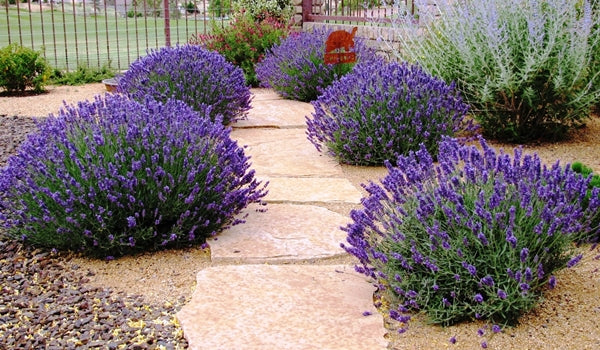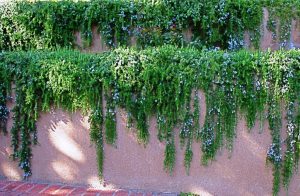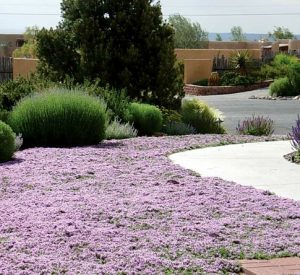by Ken Lain, the mountain gardener
Many herbs are perennial, meaning they can be planted once and left to grow for many years. Perennial herbs are essential to garden designs because they remain healthy and attractive through all growing seasons. Perennials are easy to divide, allowing you to perpetuate your herbs and those of your friends.
![]()
- “Perennial” and “Permanent” start with “P”. A reminder that they return year after year
- Most natural herbs that grow well in Arizona gardens: Echinacea aka Coneflower, Lavender, Mint, Creeping Rosemary, Upright Rosemary, Sage, Thyme
- Divide herbs by taking cuttings from a healthy clump and plant in a new location

#1 Echinacea is useful not only for healing but also as a beautiful accent in any style of garden. Echinacea (also known as the purple coneflower) grows in virtually any garden situation. From moist, fertile soil, to dry and arid conditions, echinacea has a variety that will thrive in your garden and spread through gardens like wildflowers.
#2 Lavender is used for everything, from cooking to healing. Try growing this elegant herb alongside your best flowers. From shades of purple and blue to white, lavender is an exceptionally beautiful perennial herb. Be sure to plant lavender with ample growing space. You will be shocked at how large the plants can develop after a few years.
Another trick with lavender is to grow it in a container, glazed ceramic or porous. Then, as the weather becomes colder, you can move your container to a protected area for the winter. Cold and damp are sure killers of lavenders. Wet roots are the biggest concern, so give your plants lots of potting soil and plenty of drainage.
#3 Mint is invasive, but it is also an essential addition to any hard-to-cultivate garden. It will spread anywhere you allow it and many places you don’t! Try to plant your mint in a bucket that is buried. This should keep this hardy herb container in one spot.
Mint is a beautifully scented plant. Try growing a variety of mints if you’re really interested in using it for a gently refreshing herbal tea. Remember that mint varieties mingle very easily, so allow plenty of space between each plant. This helps ensure that the bees and butterflies don’t cross-pollinate the plants. Some gardeners choose to plant mint beds out of sight of one another, which seems to be an effective way to keep them pure.

#4 Rosemary is the toughest of all herbs for the sunniest locations in a landscape, but be careful which variety you plant, as not all are winter hardy at high altitude. There are two basic types of Rosemary, upright and the creeping groundcover.
Upright Rosemary grows into an evergreen bush about hip high. Blue flowers cover this rounded bush in March just as bees start to forage in the native landscape. Best mountain hardy varieties are Tuscan, Barbeque, and Roman Beauty.
Groundcover, or Creeping Rosemary, has the same aromatic flavors as its bushy cousin but lies much closer to the ground. Perfect for creeping between boulders, flowing from raised garden beds, and softening a rock lawn. Best mountain hardy varieties are Arp, Huntington Carpet, and Blue Ice Bog.
#5 Sage is a wonderfully versatile herb in the garden. It comes in many varieties of color and growth habits. Try using it as a filler around other tall garden plants. Sage will grow for many years, returning after even the harshest winters.
After about five years or so, it is unavoidable that sage can become rangy and lose its vitality. If you have more than one sage plant, you can replace your woody plant with another sage from your own landscape, or plant a new flavor to try something different. We have nearly 10 varieties at the garden center: from pineapple sage to stunning tricolor variegated specimens, so have fun with sage.

#6 Thyme is one of the herbs that will grow in any garden. It’s perfect for gardeners who aren’t particularly hands-on because the less fussing with thyme the healthier it becomes. This herb has a lot of forms in both upright and trailing habits, so there’s one to fit almost any situation and design.
Use thyme as a filler between stones in a walkway, or choose a lawn created of nothing but thyme. It offers a graceful scent when stepped on and can handle moderate traffic and dog spotting. Thyme grows well in areas that are too dry and poor for many other herbs, including mint.
Until next issue, I’ll be helping local gardeners put together stunning herbal choices here at Watters Garden Center.
Ken Lain can be found throughout the week at Watters Garden Center, 1815 W. Iron Springs Rd in Prescott, or contacted through his web site at WattersGardenCenter.com or FB.com/WattersGardenCenter

